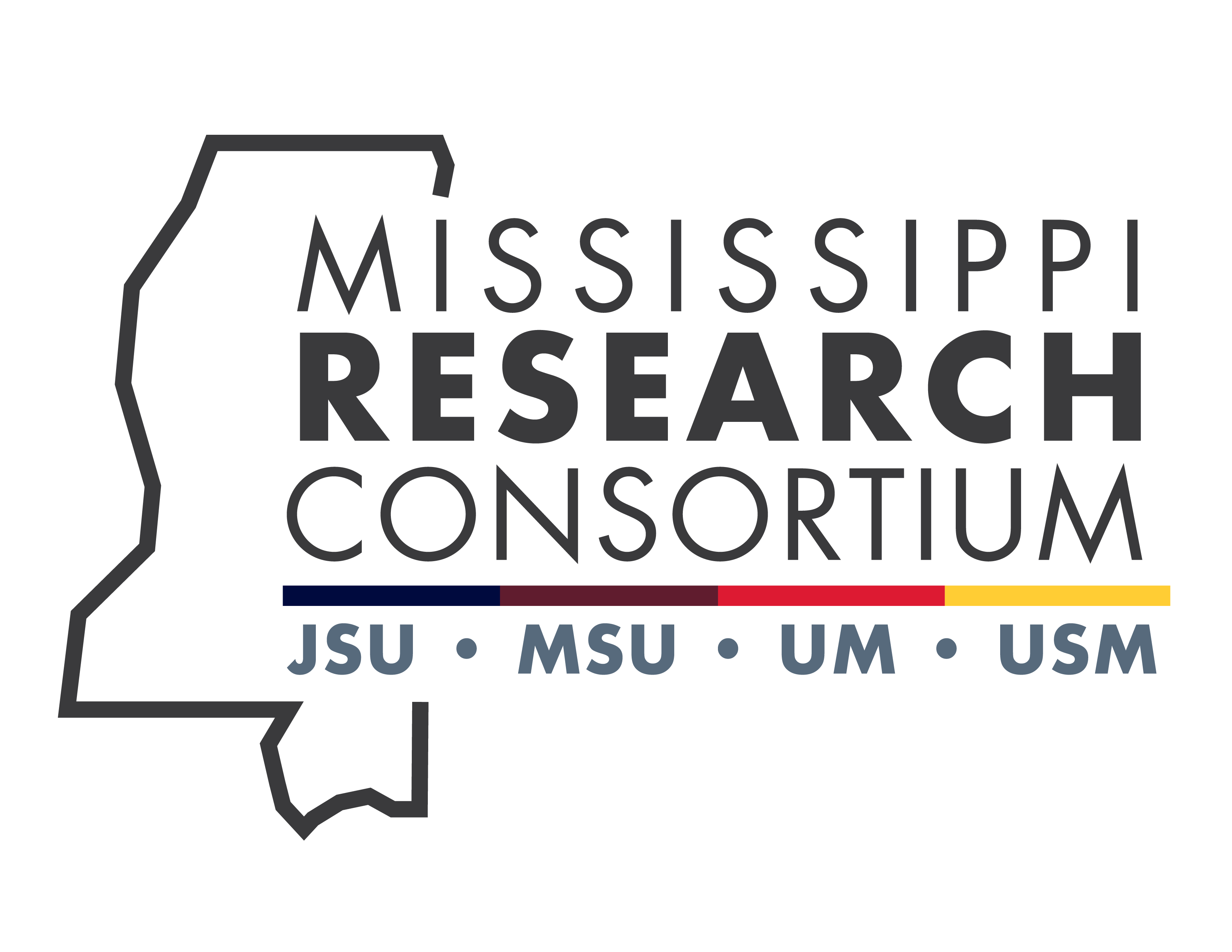

The Mississippi Research Consortium aims to develop and sustain nationally competitive research programs in the state of Mississippi. Alongside supporting basic and applied research, the consortium has several additional goals: first, to increase public awareness of science, engineering, and mathematics at all educational levels to develop a scientifically literate citizenry who can fuel the science and engineering industry in Mississippi with the state’s own human resources; second, to establish and maintain a solid scientific infrastructure in our university system by developing equipment and facility resources, collaboration resources, private sector links, and federal laboratory partnerships; and third, to expand the state’s economic opportunities through technology and knowledge transfer, including greater commercialization, increased technical assistance, and the education of a workforce that can support technology-based industries.
Formed in 1986, the Mississippi Research Consortium (MRC) includes Mississippi’s four research universities: Jackson State University, Mississippi State University, the University of Mississippi, and the University of Southern Mississippi. The MRC’s Board of Directors is made up of the Chief Research Officers from these institutions. The board serves as the Science and Technology Research Advisors to both the Executive Branch and the Legislature and integrates science and technology initiatives with economic development plans in Mississippi. The creation of the Mississippi Universities Research Authority (MURA) Act of 1992 was the product of the collaboration between the MRC, MRC Technology Transfer Task Force, and the Board of Trustees of State Institutions of Higher Learning.
The MRC’s member institutions work from an attitude of mutual respect and trust. All agree that their individual institutions have secured more resources by combining efforts than any one of them could have accomplished independently. This cooperative attitude has been successfully conveyed to faculty members, who often initiate collaborative efforts and recommend that certain proposals are directed through MRC. Generally speaking, the MRC operates by forming faculty teams from several universities to address research opportunities. The organization has received praise from the National Science Foundation and others, and has been cited as a national model for how to best form a state science and technology infrastructure. Often MRC works with all of the state’s eight public universities and the UM medical center to strengthen research components.
Not long after its inception, MRC became involved not only with joint research activities but also with human resource development programs and science policy at both the state and national levels.